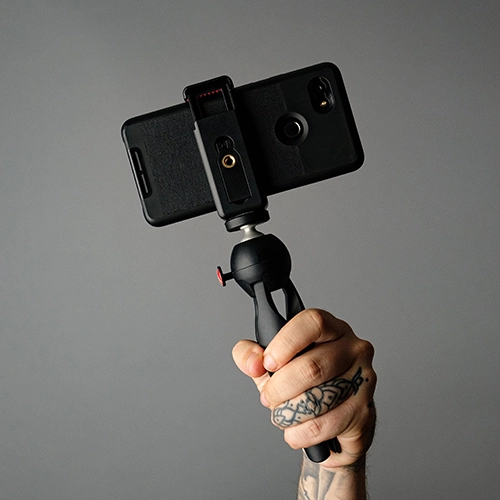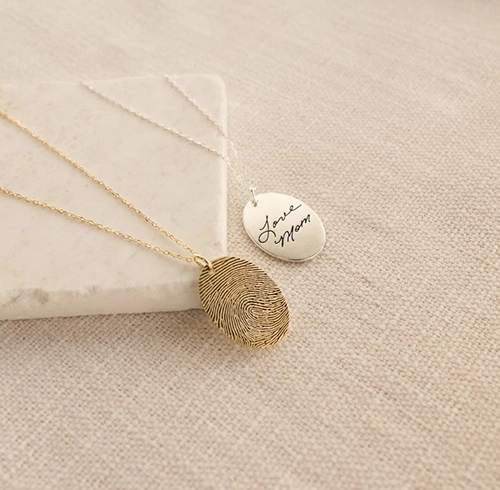Navigating the process of planning a funeral and remembering someone’s life involves some important questions. During this process, it’s common to wonder if funeral homes take photos of the deceased.
Your concern may be about privacy and making sure that images of your departed loved one aren’t floating around without your knowledge.
Or perhaps the funeral is over, and you are hoping to find some additional pictures of a loved one. Did the funeral home, medical examiner, or embalmer take any photos?
These questions, while seemingly simple, lead to a deeper exploration of a complex topic.
This is something that can be connected to what people personally believe, the traditions they follow due to their culture or religion, and what’s considered right when we remember someone who’s no longer with us.
Here we will talk about whether or not funeral homes take photos of the deceased during services, funeral home policies, and why people might take pictures of those who have passed away.
We’ll also discuss the funeral etiquette for taking and posting these photos online.
Let’s take a look!
Table of Contents
- Do Funeral Homes Take Pictures of the Deceased?
- Do Funeral Homes Take Pictures at the Memorial Service?
- Does the Medical Examiner Take Photos?
- Are There Laws About Taking Pictures of the Deceased?
- Is It OK to Take Photos at a Funeral?
Our website is supported by our users. We sometimes earn a commission when you click through the affiliate links on our website. See our privacy policy & disclosures for more information.
Do Funeral Homes Take Pictures of the Deceased?
In the United States, funeral homes generally do not take pictures of the deceased as a standard practice.
Urns Made in the USA
Funeral homes usually have policies that restrict them from taking photos of the deceased without proper permission from the family.
Due to the sensitive moments of bidding farewell to a loved one, they approach photography with utmost respect and consideration.
The policies of different funeral homes can vary from one establishment to another. When writing your funeral plans, it is important to talk with the funeral home director to understand their procedures.
Here are some guidelines they may have set or will set upon request:
Respecting Family Wishes: Central to these policies is a commitment to respecting the wishes of the grieving family.
Funeral homes understand that each family has unique preferences, cultural beliefs, and emotional needs during this challenging time. As such, they strive to create an environment that not only respects but also supports these individual wishes.
Permission and Privacy: In some instances, funeral homes will seek permission from the family before allowing any form of photography during services.
This is a practice rooted in sensitivity, recognizing that families should have the final say on whether images are taken during such a personal and emotional event. It’s a way of ensuring that the family’s privacy and feelings are protected.
Guidelines for Visitors: At the family’s request, some funeral homes establish guidelines for visitors who may wish to take photographs during visitation or memorial services.
These guidelines serve to maintain the solemnity and respectfulness of the atmosphere, ensuring that the focus remains on paying tribute to the departed.
Do Funeral Homes Take Pictures at the Memorial Service?
Same as at funeral services, funeral homes do not take photos at memorial services.
Memorial services are a time for the family and friends of the deceased to come together and remember their loved ones. It is a time for grief and reflection, and taking pictures can be seen as disrespectful or intrusive.
Funeral homes are usually willing to accommodate photo requests from families, but it’s essential to understand what this process entails.
Be sure to talk with them to learn more about their photography policies for memorial services or other types of funeral services.
Related: The Difference Between a Funeral, Memorial, & a Celebration of Life
Does the Medical Examiner Take Photos?
Yes, it’s true that the Medical Examiner (ME) may take photographs of the deceased during the course of an autopsy.
These photographs serve dual purposes — medical and legal — primarily to document the body’s condition, and injuries, and to learn their identification.
Several significant reasons underlie the ME’s decision to photograph the deceased:
- Documentation of Injuries. These photographs aid the Medical Examiner in determining the cause of death and identifying potential suspects, if applicable.
- Identification. In cases where the deceased’s identity isn’t immediately established, the photographs serve as a valuable resource for comparison with missing person databases.
- Legal Support. Photographs can be instrumental as evidence in both criminal trials and civil lawsuits.
These photographs are usually retained within the ME’s confidential files. They are only accessible to authorized personnel and primarily law enforcement officials for special cases.
If you have any queries regarding the ME’s photography procedures, contact your local medical examiner’s office to address your specific questions or worries.
Are There Laws About Taking Pictures of the Deceased?
The laws about taking pictures of dead bodies vary from location to location. There are no federal laws specifically prohibiting taking photos of the deceased, but there might be state law or local laws that do.
However, according to a Computer Law & Security Review by ScienceDirect, the right to privacy over death images has been protected by the Constitution.
What is known as Post-Mortem Privacy allows family members to control the spread of photos of deceased relatives.
Within the funeral industry, the practice of taking photographs of the deceased involves not only ethical considerations but also legal ones that must be navigated with care.
Funeral homes are required to follow state laws and regulations governing the practice of photographing the deceased.
For example, you may run into situations where funeral homes will agree to take a photo of the deceased during funeral arrangements, but they are not allowed to use their own camera equipment.
Since legal requirements can vary by location, please contact your local funeral home or legal authority for more information.
Is It OK to Take Photos at a Funeral?

Etiquette In Funeral Photography
The decision to take photographs during a funeral or the final disposition is a personal one. It should be made with respect and empathy for the family of the deceased.
Ultimately, each individual should decide what is best for them, while also honoring the wishes of the family.
Here are some key points to consider:
| Reasons to Consider | |
| Preserving Memories | Photography can help you hold onto memories of the event and the person. |
| Tribute and Reflection | Photos can be a way to pay tribute and reflect on the individual’s life and impact. |
| Personal Healing | Taking photos might aid in the healing process for some individuals. |
| Reasons to Think Twice | |
| Privacy and Respect | Ensure that your photography respects the privacy of the family and the solemnity of the event. |
| Different Cultures and Religious Beliefs | Consider the cultural or religious beliefs of the family and whether photography aligns with their wishes. |
| Condition of the Body | Has the embalming process been done? Did the person die of natural causes, or is there any reason that the appearance or presence of the body might be shocking? |
When considering photography at a funeral, the key principle is respect for the family and the solemnity of the occasion. One of the first steps is to seek permission from the family or the funeral home of the family.
Asking yourself the following question can help uphold respectful funeral etiquette:
- Would family and close friends be okay with the photos being on social media?
- Is this an open casket funeral? Does the family want that photographed?
- Are they okay with the final resting place being shared publicly?
- Do they want to keep the place of death or direct cremation plans private?
- Is taking a photograph respectful to the cultural or religious groups attending this funeral?
Related: Funeral Reception Etiquette
Is It Okay to Take Photos of the Deceased at a Viewing?
Regardless of whether it’s a home wake, a military service, or a traditional funeral service, the first, and most respectful step is always to seek permission from the grieving family before deciding to take any photographs.
If the family requests no photography, this decision should be honored without hesitation. Public viewings are an intimate time of closure, and the family’s feelings take precedence.
If you’re granted permission to take photographs, it’s essential to practice discreet photography. Funerals are moments of reflection and remembrance, and any disruption can be jarring for attendees.
When using a camera, opt for silent mode and turn off the flash. The goal is to capture moments while minimizing any impact on the solemn atmosphere of the event.
Why Do People Take Photos of the Deceased at Funerals?

At first glance, the idea of funeral homes taking pictures of someone who has passed away might seem perplexing. But there are actually several good ideas behind why the family may want a photo of their loved one taken.
This request can stem from a desire to preserve the last time they will get to view the person who held a special place in their hearts.
It can also be a way to preserve something unique to that individual, such as a tattoo or jewelry they will be wearing in their final resting place.
Here are some ways a family can use photographs as tools for both coping with grief and crafting memories:
Fingerprint Jewelry: By taking a photograph of their fingerprint, family members can have it engraved onto a piece of jewelry, such as this necklace or this ring, along with important details like their date of birth.
This allows them to carry a physical reminder of their loved one’s touch and presence, offering solace during moments of grief.
Preserve or Copy Their Tattoo: For those who’ve adorned their bodies with meaningful tattoos, preserving or replicating these artworks after their passing can be a powerful way to honor their memory.
In the context of preservation, some choose to capture high-quality photographs of the tattoos as they appear on the body.
Framed Remembrances: Selecting a single photograph that encapsulates the essence of the departed and framing it can be a powerful way to keep their memory alive.
Placed in prominent spaces, these framed images serve as daily reminders of the love shared, inviting quiet reflections and offering moments of connection even after they’re gone.
Personalized Memorial Albums: The surviving spouse may want photos to create memorial albums that serve as living testaments to the person’s life.
These albums blend photographs with handwritten notes, birth certificates, and mementos. Constructing these albums becomes a healing act, offering a dedicated space to reminisce, grieve, and honor the departed’s impact on individual lives.
Legacy Projects: Some find solace in undertaking creative projects that honor the deceased. This might involve compiling photographs into a video montage, writing a memoir, or even crafting art inspired by the person’s life.
These projects channel grief into positive outlets, creating lasting legacies that celebrate the unique journey of the departed.
Related: Creative In Loving Memory Gift Ideas
Can You Post a Funeral Photo on Social Media?

The death of a loved one is a difficult time, and many people turn to social media to share their grief and memories. However, there is some debate about whether or not it is appropriate to post funeral photos on social media.
Our advice is, in general, do not post funeral photos on social media. It may be seen as disrespectful to the deceased and their family to share photos of the funeral without their permission. Seeing these photos online can also be upsetting for those grieving, as it brings up difficult memories and emotions.
If you do decide to post online, consider these:
- Be respectful of the deceased and their family. Avoid posting photos that are graphic or disturbing.
- Be mindful of your audience. Consider who will see the photos and how they might react.
- Use a respectful caption. Avoid making jokes or making light of the situation.
- Be mindful of the privacy settings on your social media account. Make sure that only people who you want to see the photos can see them.
If you are unsure whether or not to post funeral photos on social media, take this advice: it’s always best to err on the side of caution and refrain from posting.
There are many other ways to remember and honor the deceased, such as writing a eulogy, creating a memorial website, or planting a tree in their name.
Related: What to Post Online When Someone Dies
Is Photography Right for My Loved One’s Service?
As we navigate the sensitive topic of whether funeral homes take pictures of the deceased, it becomes evident that the practice is deeply intertwined with personal preferences, cultural traditions, and considerations for the family.
Funerals are opportunities to memorialize a loved one. Family, friends, and acquaintances are there to pay tribute, and offering condolences while saying a final goodbye to an important person in their lives.
Photography, if done, should enhance this experience rather than detract from it. It’s essential that you find the balance between a desire to document with the need to honor the departed and support the family. The last thing you want is to hurt, offend, or in some way dishonor the deceased and their family.
As each individual person considers these things, the entire gathering becomes united in their intention to remember and celebrate the life of the individual who has passed away.
We all know the enduring importance of photography. By keeping in mind the main goal of honoring the departed, you can find a way to remember special moments without taking away from the main purpose of the service.
Read Next: What to Expect at a Traditional Funeral Service





